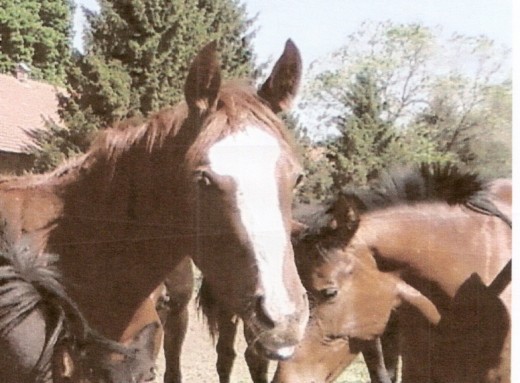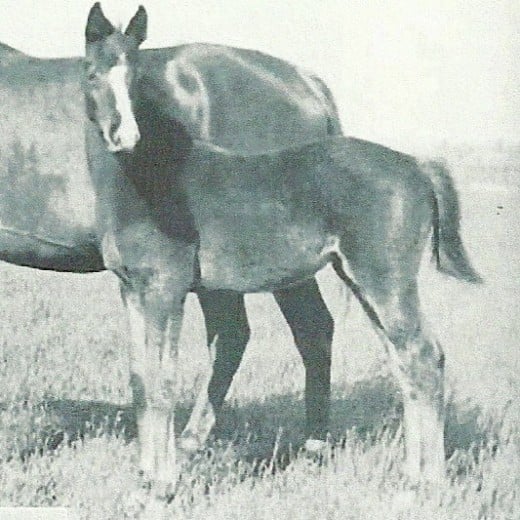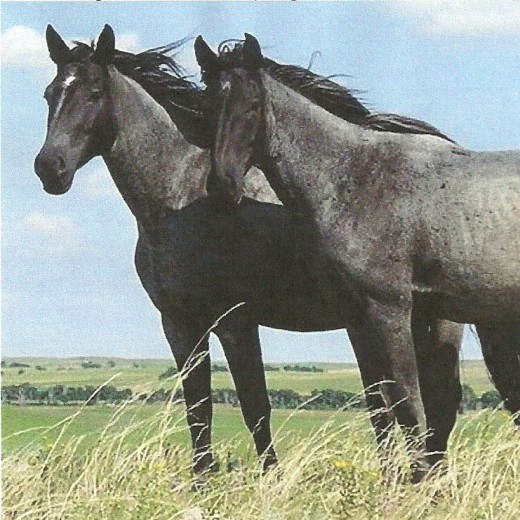Thoroughbred Racing and Unwanted Horses Rescue

The Thoroughbred horse racing industry in America is well aware of inherent issues revolving around the care and health of its participants, thousand pound animals taught to race against one another and to dig deep for victory. The Sport of Kings has been around for centuries, and the problem in the United States of unwanted horses, free and wild creatures who roam the West and those who toil on the race tracks, is not new.
But new awareness in recent years of the existence of outrageous numbers of unwanted horses and possibly of avoidable race track breakdowns is changing horse racing and how America deals with its unwanted horses.

New Foals Each Year
In Thoroughbred horse racing, over 30,000 foals are born and registered for racing each year.
Just one each year, at the age of three, will win America's most prestigious horse race, the Kentucky Derby. Only 20 from each yearly crop will become eligible to enter the Derby gate.
In 2008, when the phenomenal Big Brown had racing horsemen talking in controversy from East to West, a filly named Eight Belles was one of the 20 Derby entries, along with Big Brown. The filly menaced Big Brown to the wire, finishing second to the phenom, then collapsed in a heap with two broken legs as she galloped out past the finish line.
The breakdown was a horrific reminder that Thoroughbred race horses give their all most of the time on the track, only a heralded few enter the record books, many do not survive following a mediocre racing career, and some, like Eight Belles, create a furor of reaction that seems almost destiny-like. Eight Belles' necessary euthanasia on the track on Kentucky Derby day at Churchill Downs was a crowd event of tears and shock.
It followed the breakdown of Barbaro in 2006's Preakness Stakes, the second of the three Triple Crown races. Brave Barbaro shattered his right hind leg in a simple, unfortunate misstep, was temporarily casted as millions watched and prayed, and then ambulanced to a Pennsylvania equine hospital, where he succumbed eight months later to laminitis, a painful inflammatory disease of the hoof.
Laminitis is a terribly drawn out and agonizingly painful condition for which there is no cure. It cut short the life of Secretariat in 1989, as well as Barbaro and many other horses which suffer from the disease usually out of lack of exercise and excessive time limited to a stall.

Is the Thoroughbred Industry Doing Enough?
The first step to a cure for anything is awareness of the problem.
The filly Ruffian's horrific breakdown in 1976 in her much publicized match race with boy counterpart and Kentucky Derby champion Foolish Pleasure for the most part came and went as one of those difficult things that occur in Thoroughbred racing.
Barbaro's breakdown and struggle against laminitis brought unprecedented public awareness to race track breakdowns and the conditions under which race horses perform. Eight Belles' death in the Kentucky Derby dirt increased the cries of awareness to a fever pitch.
Those cries of raised awareness resulted in the Thoroughbred industry's June 16, 2009 American Horse Council National Issues Forum concentrating their discussions on "The Welfare of the Horse".
At the forum Dr. Tom Lenz, chairman of the Unwanted Horse Coalition, presented somewhat discouraging figures, including these:
- 80,000 to 150,000 equines annually join the unwanted list
- 432 US horse rescue agencies can house just 40 residents apiece
- 18,000 horses are rescued evey year but just half of them find adoptive homes
- $18.6 Million annually would be needed to euthanize unwanted equines
- $234 Million annually would be required to house unwanted horses
- $15,000 is an average cost per year for an individual to properly house a horse
Dr. Lenz's figures were recited as statistics resulting from a public survey of horse awareness taken from November, 2008 to January, 2009. The survey asked questions of over 23,000 individuals in relation to the problem of unwanted horses, and the results were published in the October, 2009 issue of Horse Illustrated.
Synthetic Surfaces and Studies
The jury is still out on whether synthetic race tracks have or will cut down on the number of race day breakdowns. Does the synthetic surface, which in texture simulates turf, equal a safer running condition for the Thoroughbred?
European flat racing takes place exclusively on turf, a fact which causes Euro trainers and owners to think twice before shipping their stars to America to participate in the fall Breeders' Cup World Championships. Twice recently, the Breeders' Cup races, which do feature some turf races, were held at Santa Anita's new synthetic track. This season, primarily because of water drainage problems, Santa Anita officials voted to rip up the synthetics and return to dirt racing.
Turf racing has been part of the American racing scene in its own right, but the dirt races are where the mammoth stars are born and mostly perform.
In Europe's July 23, 2011 George VI and Queen Elizabeth Stakes (Eng-G1), a 1-1/2 miles turf event, Godolphin Racing's Rewilding snapped a cannon bone in front of the viewing grandstand while he was gamely rallying toward the race leaders. The race is a "Win and You're In" event of eligibility to the American Breeders' Cup World Championships Turf race scheduled in 2011 for November 5, the second day of the two-day festival.
Studies on Thoroughbred racing conditions such as synthetic surface safety, retraining retired race horses to other jobs, rescue of unwanted Thoroughbred and general horses, and causes of race day fractures continue under scrutiny by the industry and veterinarians nation-wide.
Veterinarian Dr. Wayne McIlwraith of Colorado State University's Gail Holmes Equine Orthopedic Research Center undertook studies of pre-existing fractures through blood biomarkers research that can indicate microdamage in horse's bones that may later lead to a catastrophic injury. Individual tests, albeit expensive, can be done, Dr. McIlwraith's research reported, to determine if a horse is in danger of suffering future fractures.
Dr. McIlwraith's findings were reported in the September 6, 2008 issue of Blood-Horse magazine.
The 2011 season's hot topic in American horse racing has been whether or not to completely ban race day drugs, including Salix (Lasix), which helps reduce pulmonary hemorrhage caused by excessive exercise. Europeans do not allow any type of drugs in their horse racing society.

Horse Rescue Work Goes On
Some horsemen have taken up the cause of unwanted Thoroughbred racehorses after discovering the truth about Ferdinand (1986 Kentucky Derby winner) and Exceller. Ferdinand was slaughtered in Japan, and Exceller's life ended in a Sweden slaughterhouse. Foreign-owned slaughterhouses in the United States have been closed for several years. Americans don't eat horses, but foreign countries do, and the cruel endings go on in Canada and New Mexico and elsewhere.
The Colorado Horse Rescue group and the Kentucky Equine Humane Center are examples of agencies nationwide in America that continue the difficult task of rescuing and homing unwanted horses. Rescue agencies are budget poor and have thousands of equine companions available for adoption.
In the October 2, 2010 issue of Blood-Horse magazine, Susan Hayden Kennedy wrote "A Horse For My Kingdom" for the column "Final Turn". Kennedy said horses in rescue facilities around the country continue to wait for help.
Kennedy states these horses' needs almost poetically: "Their heads are high; their ears, alert. If you listen, you can hear them ask: 'What happens next? I'm awaiting my (new) assignment'".
- The Horse | Horses FREE to a Good Home: Thoroughbred
Thoroughbred adoption and searches for breeds to rescue are pinpointed.
- Bengal Tigers face extinction
Discover the Bengal Tigers' plight.
- The Ugly Truth About Unwanted Horses
More on what happens to unwanted horses, even retired racehorses.
- College Students Devote their Spring Break to Caring for Abused Farm Animals
Learn how college students are helping to break the chain of abuse suffered by many farm animals.








